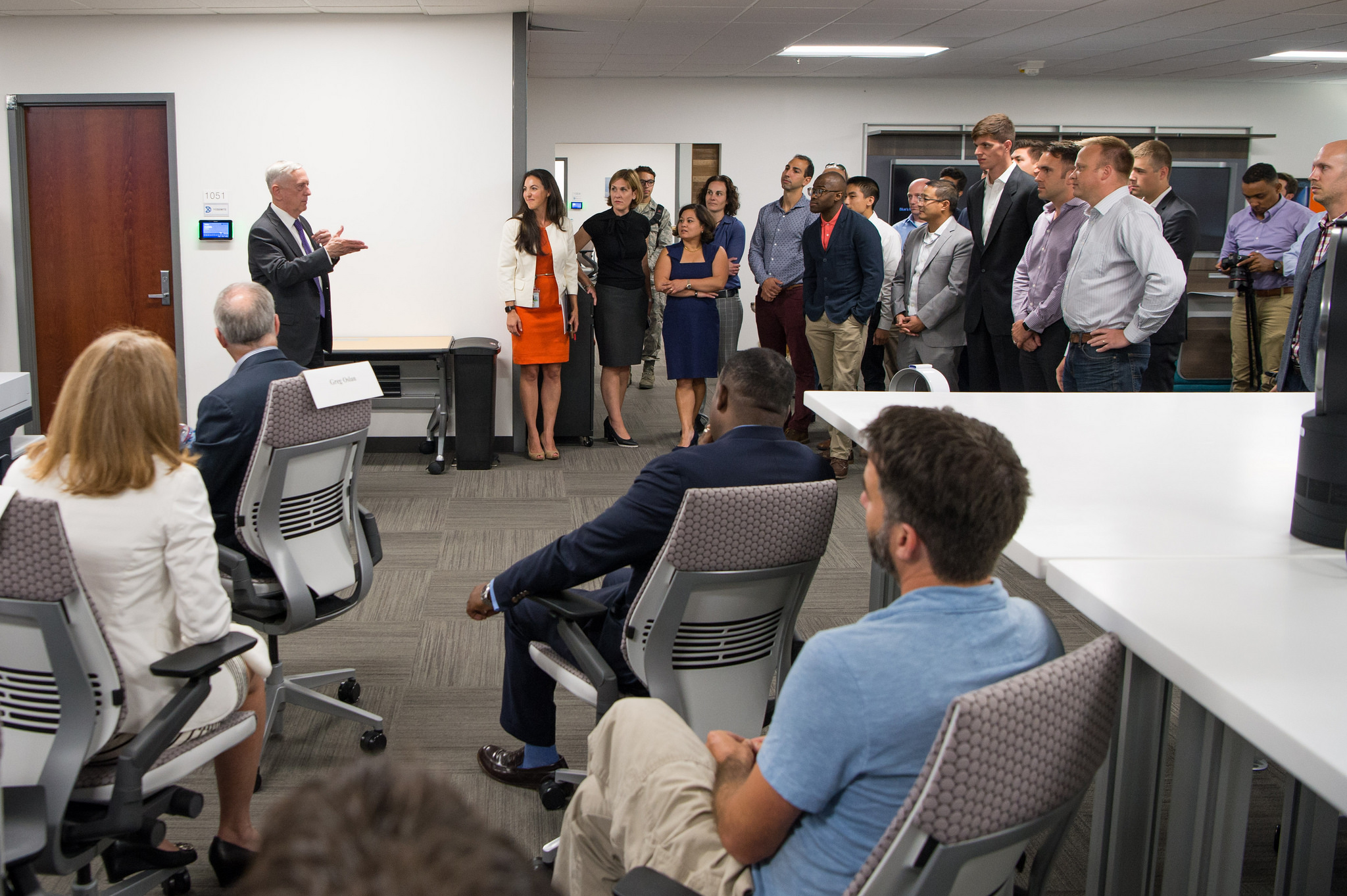Pentagon Ramps Up Civilian Hiring; Other Agencies Get Cut
Posted on

WASHINGTON: Despite direction from the White House for federal agencies to trim their payrolls, the Pentagon is going in the opposite direction — hiring more civilian employees to support burgeoning investments in cyber, intelligence, engineering, shipbuilding and logistics.
The move, which is meant to cut down on the number of contractors working for the feds, is in keeping with Defense Secretary James Mattis’ push to modernize the military to stay out in front of rapidly modernizing powers like China and Russia.
The plan is spelled out in a new five-year business plan released by the Pentagon’s Chief Management Officer, John Gibson. In the National Defense Business Operations Plan, Gibson writes that “while it may be appropriate for other federal agencies to reduce their civilian workforce, for the DoD, right-sizing will necessitate targeted growth to both restore readiness and increase the lethality, capability, and capacity of our military force.”
Lethality is a key phrase oft repeated by Defense Secretary James Mattis to describe a range of activities, from developing hypersonic missiles to growing the size of the overall force. Chief among the tasks he is demanding of his staff are pushing the envelope on developing new tech to meet long-range threats form the Chinese and Russians, who went to school on American capabilities during the past 17 years U.S. troops were fighting it out with insurgents in Iraq and Afghanistan.
Mike Griffin, undersecretary of defense for research and engineering, is leading the change in this respect, and has challenged his subordinates not to be afraid to fail more often when pursuing next-generation technologies.
Griffin, who took office in February, has blasted the Pentagon’s slow-moving, risk-averse culture, saying “my greatest enemy is time; my greatest enemy is not breaking a piece of hardware” in testing. He said recently that his message to Mattis has been that, “we can either retain our national [military] preeminence, or we can retain our processes, but we cannot have both. We have to thin out our processes like weeds in your favorite garden.”

The attack submarine USS Greenville in drydock.
In less colorful language, the new business plan appears to be getting after that. It represents “a significant shift in how we approach workforce sizing, shaping, and structuring,” the document states, while moving “away from the practice of managing to an arbitrary cap on government civilians.”
Growing the permanent civilian workforce would appear to fly in the face of the “drain the swamp” rhetoric that the Trump administration prefers, but by moving away from “needlessly expensive” contractors and borrowing military personnel to perform civilian jobs, the document argues, that the whole system will be less expensive and run more effeciently.
The pan also ignores a recent attempt by House Armed Services chair Mac Thornberry to slash DoD civilian personnel by 25 percent, a move that was mostly squashed in the House’s recent markup of the 2019 defense bill. There are about 750,000 civilians and more than 600,000 contractors working for the department today.
Asked about the growth in the DoD workforce, Pentagon spokesman Christopher Sherwood told me that the “growth is already occurring, reflected in both President Trump’s FY18 and FY19 budget requests, which increased civilian workforce levels, outside of headquarters, for key mission and readiness requirements.”
Under an Obama-era initiative, defense headquarters offices were told to cut 25 percent of their employees, leading to reductions of about 40,000 civilians, or a 3.2 percent reduction.
Given the SecDef’s focus on lethality, modernization, and the push to build more ships and aircraft more quickly, the biggest growth areas are directly related to areas like maintenance at shipyards and logistics depots, along with “operational requirements in the cyber and intelligence domains; science, technology, engineering, and mathematics occupations that support lethality, readiness regeneration and force structure sustainment functions,” Sherwood added.
Subscribe to our newsletter
Promotions, new products and sales. Directly to your inbox.
